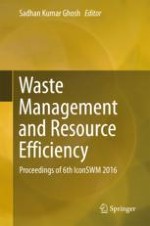2019 | OriginalPaper | Buchkapitel
Significance of Constructed Wetlands for Enhancing Reuse of Treated Sewages in Rural India
verfasst von : R. S. Sutar, Dheeraj Kumar, K. A. Kamble, Dinesh Kumar, Y. Parikh, S. R. Asolekar
Erschienen in: Waste Management and Resource Efficiency
Verlag: Springer Singapore
Aktivieren Sie unsere intelligente Suche, um passende Fachinhalte oder Patente zu finden.
Wählen Sie Textabschnitte aus um mit Künstlicher Intelligenz passenden Patente zu finden. powered by
Markieren Sie Textabschnitte, um KI-gestützt weitere passende Inhalte zu finden. powered by
